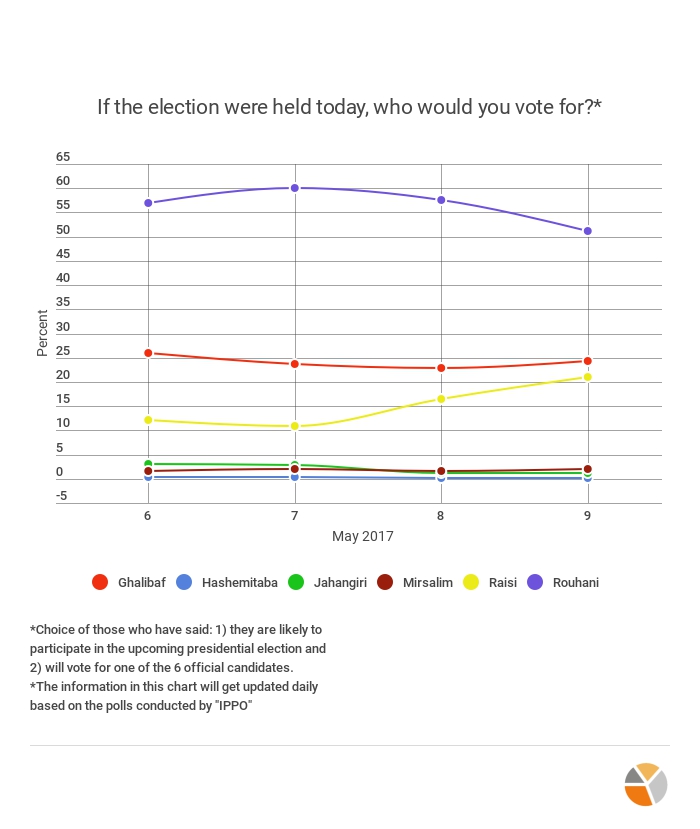Poll Results of May 9

The Vote to Elect the Iranian President
Hassan Rouhani has been the leading candidate in the past two days however his ratings are declining. Right now 51% of people who say 1) they will definitely or likely participate in the May 2017 election and 2) are inclined to vote for one of the six running candidates, have voted for Hassan Rouhani as their first choice in recent rounds of polls. For the 5% decrease in votes for Rouhani, Ebrahim Raisi has gained 9% in the past four days. The ratings of Mohammad Bagher Ghalibaf have not changed significantly. The three other candidates, Jahangiri, Mir-Salim and Hashemitaba are all scoring below %2 (see the above chart).
Based on the current polls margins of error (between 3 to 4 percent), it is early to speculate about the changes to patterns of ranking and vote percentages. The current developments in voting patterns show that 10 days to Election Day, one-third of the voters are still undecided and one-sixth of them have not expressed a clear opinion as to whom they will vote for (see the chart to the left).


